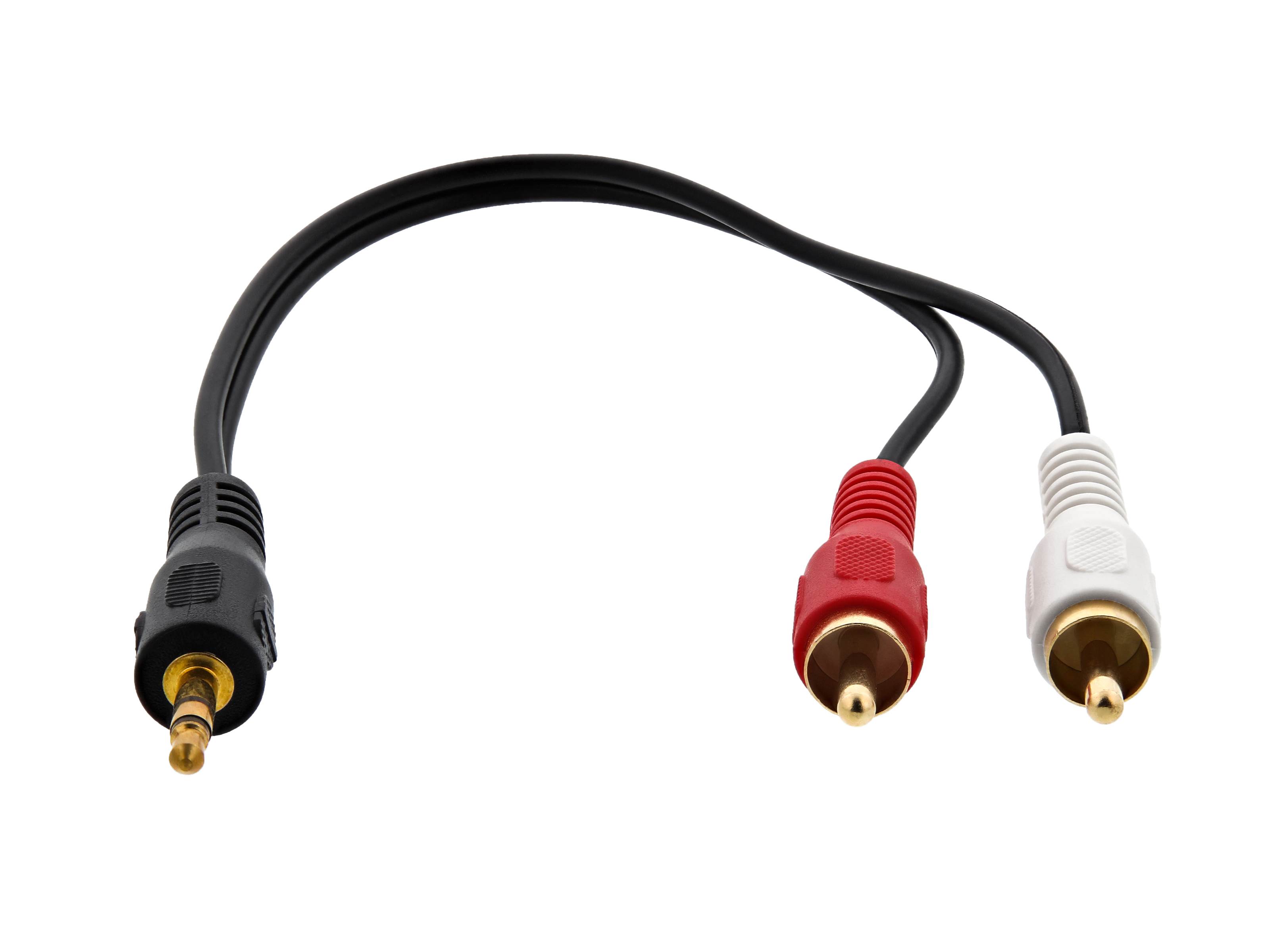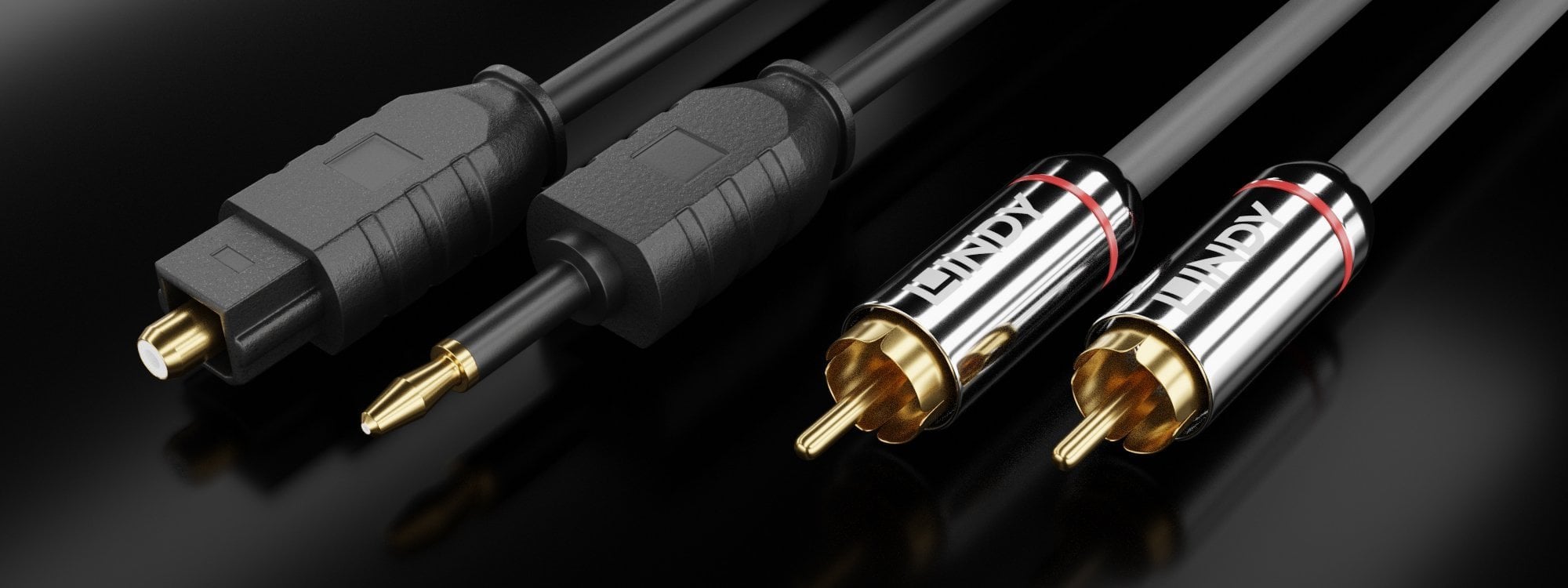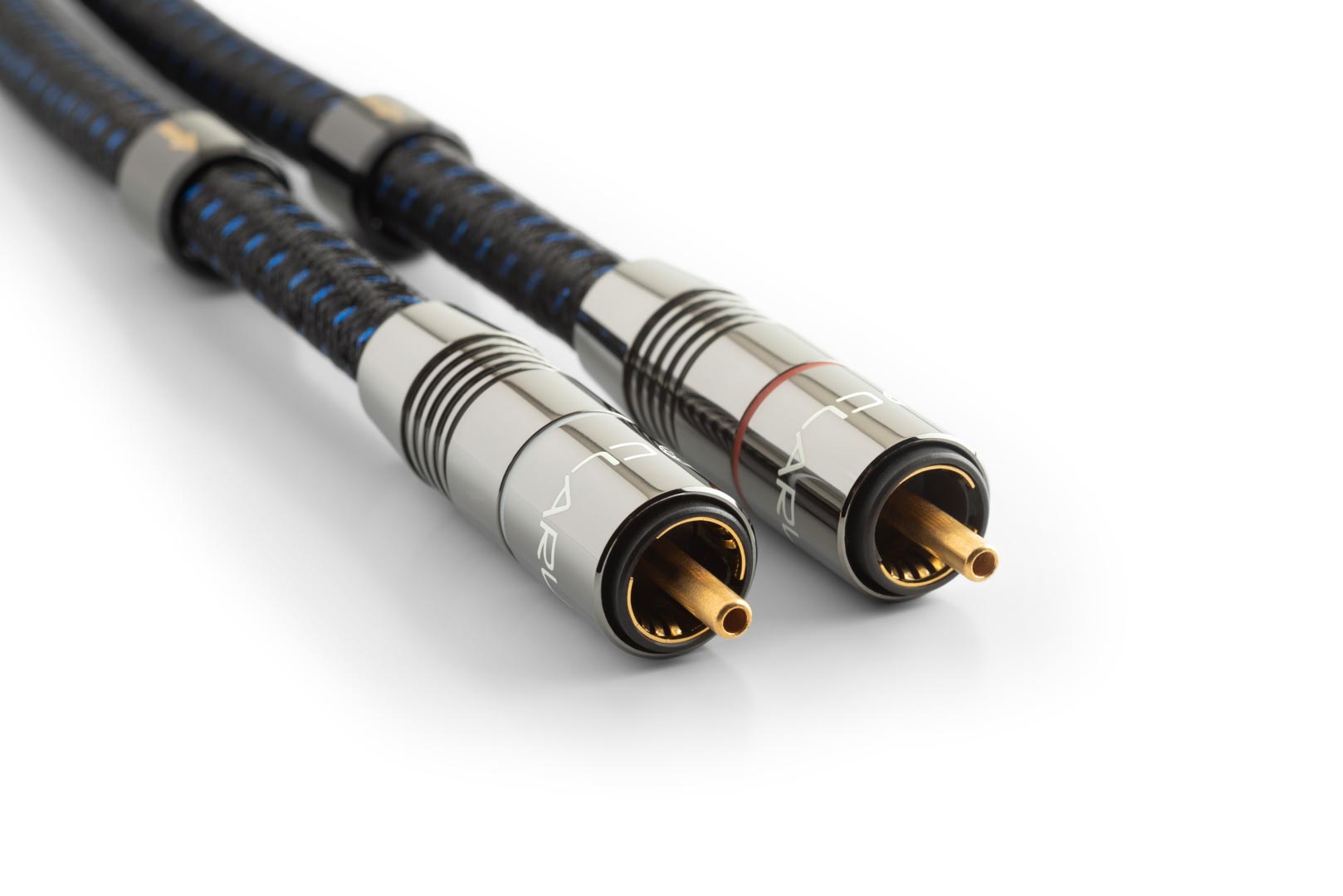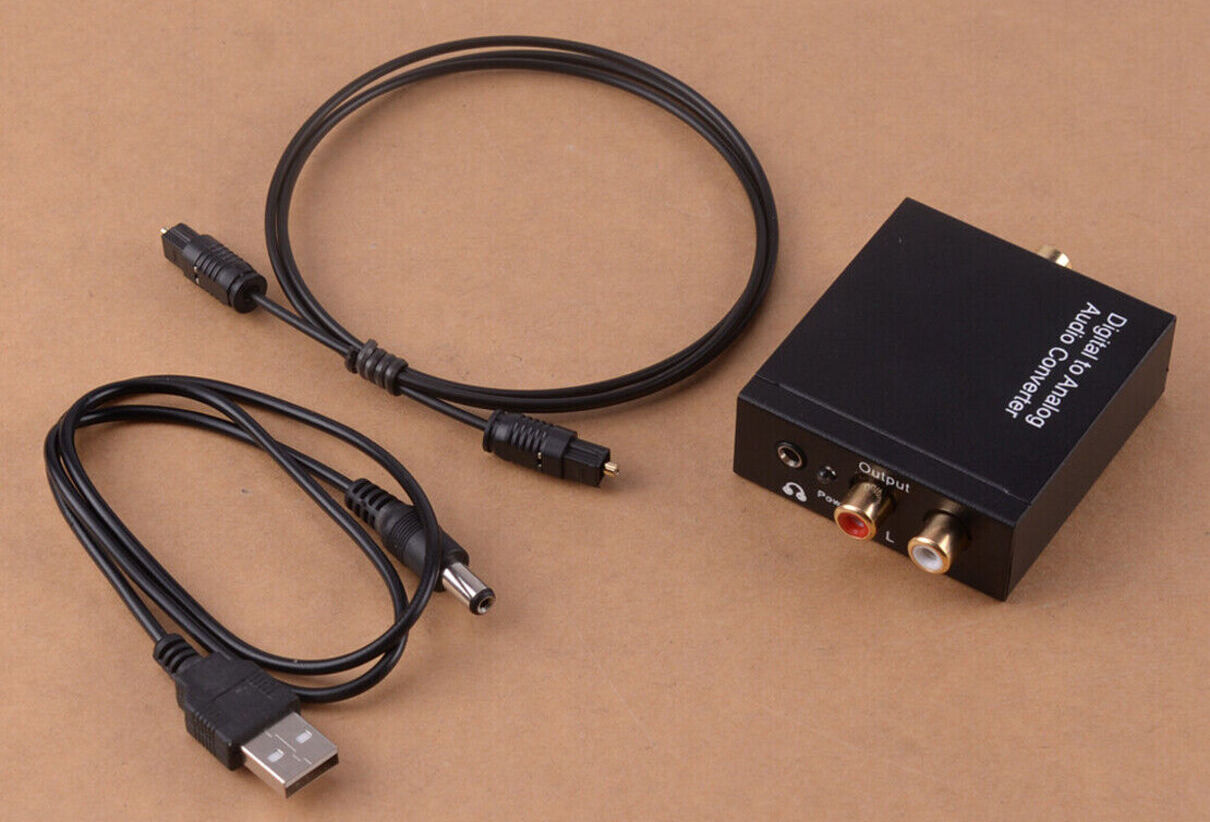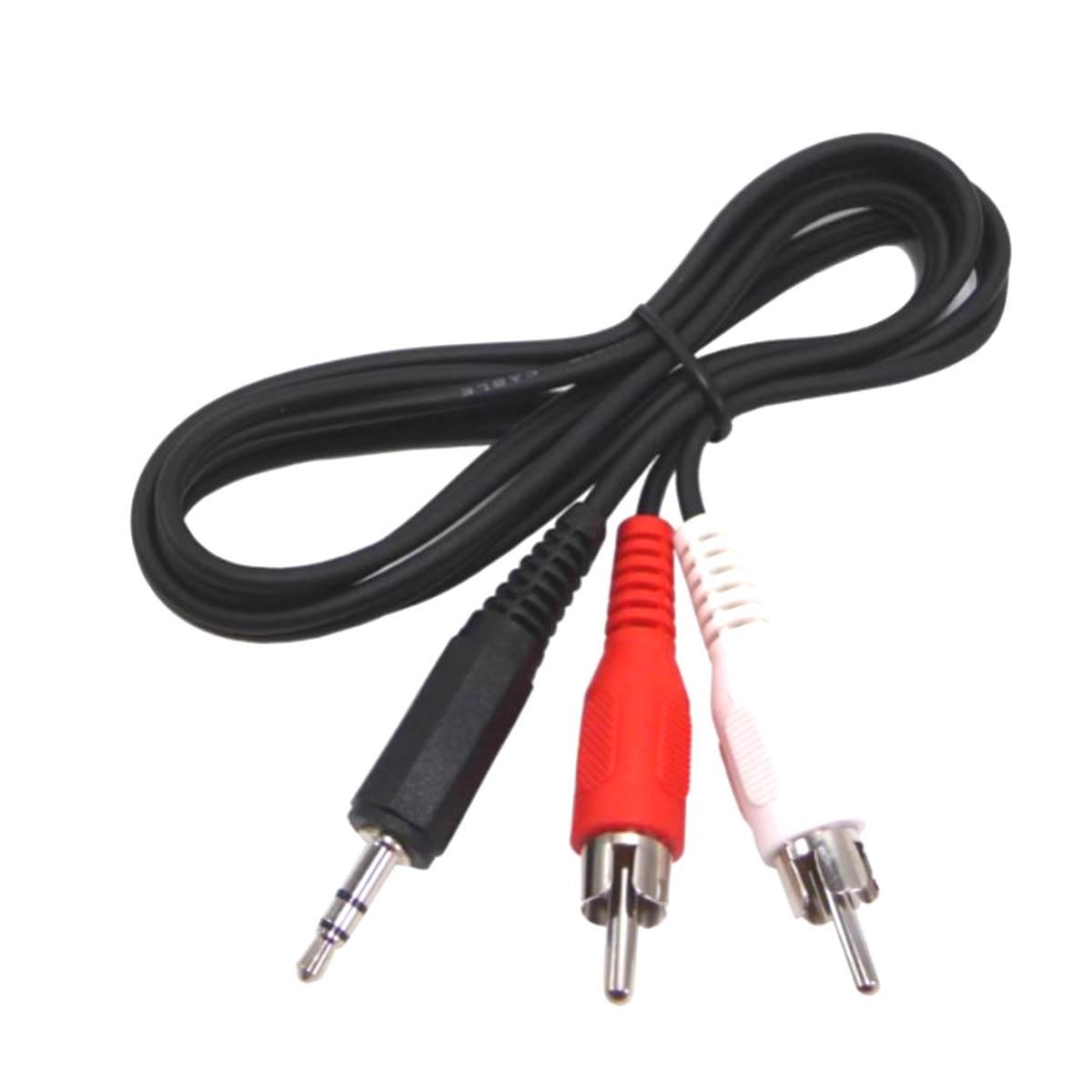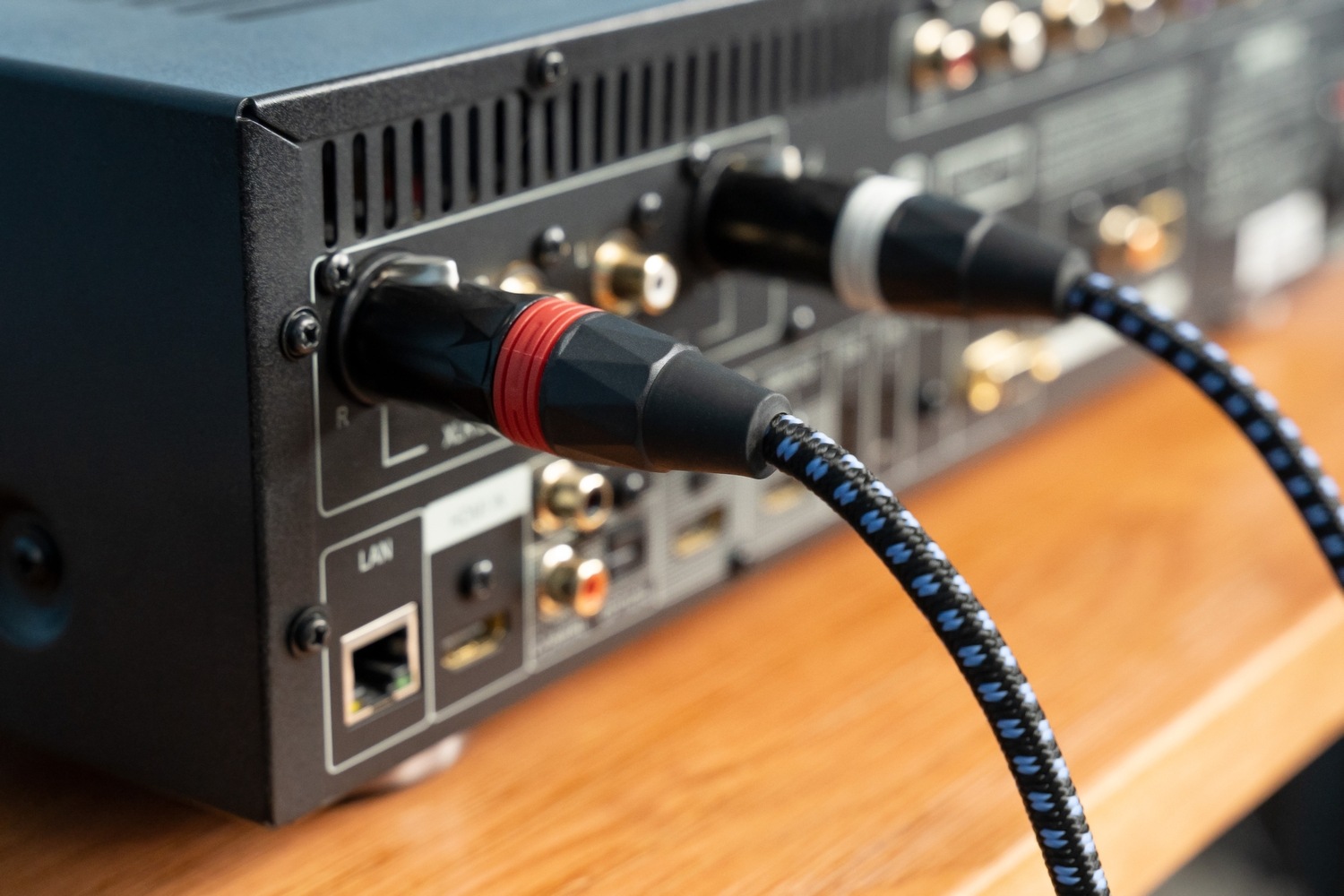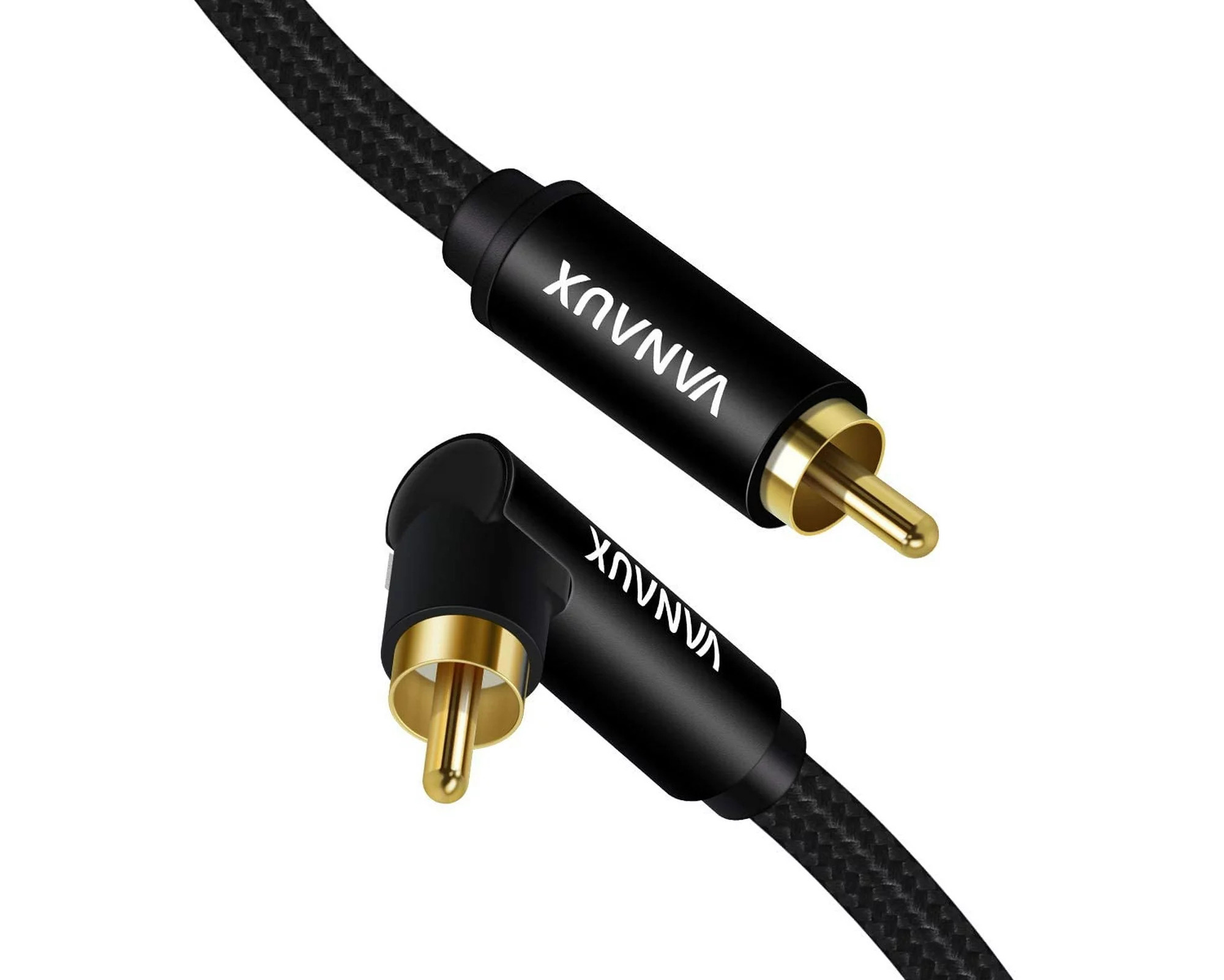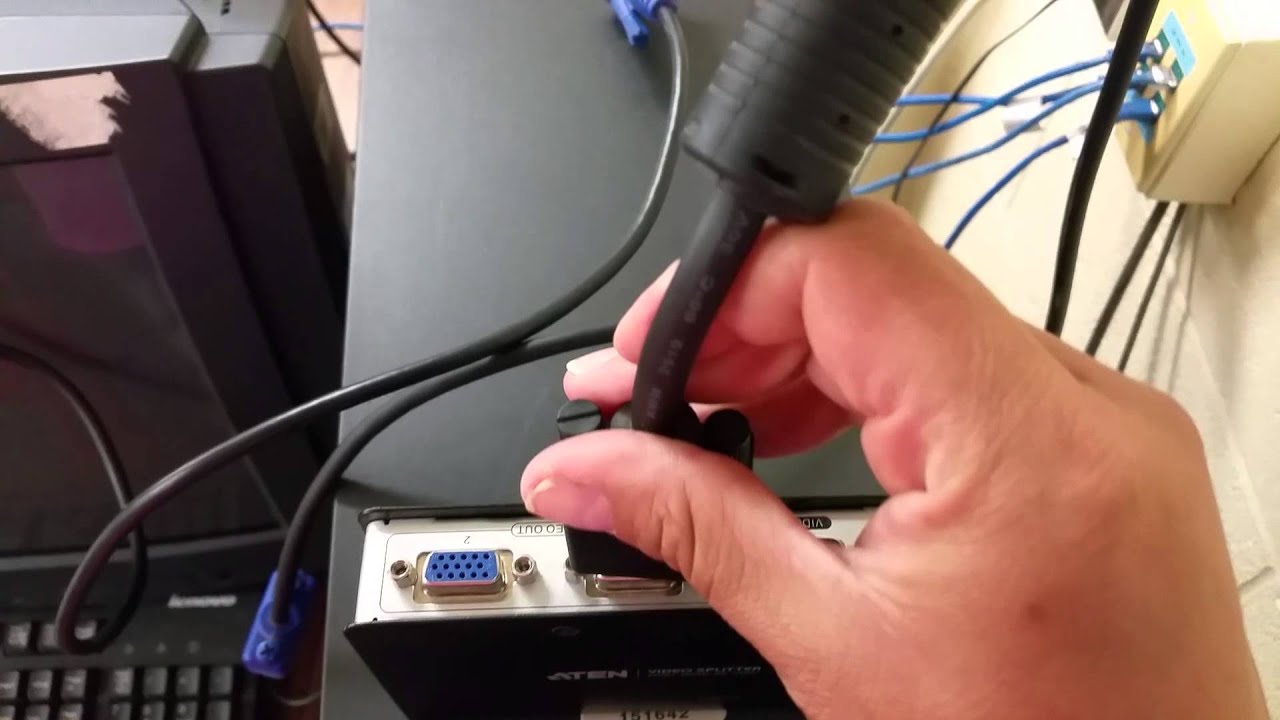Home>Production & Technology>Audio Cable>What Is A Mini Audio Cable


Audio Cable
What Is A Mini Audio Cable
Modified: January 22, 2024
Discover the purpose and benefits of a mini audio cable. Learn how an audio cable can enhance your audio experience and connect your devices seamlessly.
(Many of the links in this article redirect to a specific reviewed product. Your purchase of these products through affiliate links helps to generate commission for AudioLover.com, at no extra cost. Learn more)
Table of Contents
Introduction
Welcome to the world of audio cables, where the quality of your sound experience is determined by the cables you choose. When it comes to connecting audio devices, having the right cable is essential. One such cable that plays a significant role in audio setups is the mini audio cable.
Mini audio cables, also referred to as 3.5mm audio cables, are small, versatile cables that carry audio signals between devices such as smartphones, tablets, laptops, headphones, and speakers. They have become a ubiquitous part of our digital lives, connecting us to our favorite music, podcasts, and videos with ease.
Whether you’re an audiophile, a music lover, or a casual listener, understanding the basics of mini audio cables can greatly enhance your audio setup and overall listening experience. In this article, we’ll explore the world of mini audio cables, their different types, connectors, compatibility, advantages, disadvantages, and provide some tips for choosing the right cable for your needs.
So, if you’re ready to dive into the world of audio cables and maximize your audio enjoyment, let’s get started!
Definition
Mini audio cables, also known as 3.5mm audio cables or aux cables, are small audio cables that transmit analog audio signals between devices. They feature a 3.5mm connector on each end, hence the name, and are commonly used for connecting devices like smartphones, tablets, MP3 players, laptops, and audio equipment such as headphones, speakers, and car stereos.
These cables utilize a tip-ring-sleeve (TRS) connector, which consists of three sections. The tip carries the left audio channel, the ring carries the right audio channel, and the sleeve serves as the ground or common connection. The mini audio cable is popular due to its versatility, compatibility, and compact design.
While the term “mini” may imply a reduction in quality or performance, mini audio cables can transmit audio with high fidelity and clarity. The cables themselves are typically shielded to minimize interference and ensure a clean signal transmission.
Mini audio cables come in various lengths, ranging from a few inches to several feet, allowing flexibility in connecting devices at different distances. They can also be found in different colors, making it easy to identify and distinguish between multiple cables.
As technology continues to evolve, the need for mini audio cables remains prevalent. These cables are widely used in a variety of settings, including music studios, offices, schools, homes, and entertainment venues. They provide a convenient and reliable way to connect audio devices quickly and easily, making them an essential component in any audio setup.
Purpose and Uses
The primary purpose of mini audio cables is to transmit analog audio signals between different audio devices. They serve as a versatile and widely compatible solution for connecting devices that require audio transfer, allowing users to enjoy their favorite music, podcasts, movies, and more. Here are some of the main uses of mini audio cables:
- Connecting Headphones and Speakers: Mini audio cables are commonly used to connect headphones and speakers to audio sources. Whether you’re plugging your headphones into your smartphone, laptop, or audio interface, a mini audio cable provides a reliable connection with excellent audio quality.
- Connecting Mobile Devices to Audio Systems: Many audio systems, such as car stereos, home theaters, and portable speakers, have aux-in ports that allow you to connect your mobile devices directly. By using a mini audio cable, you can effortlessly connect your smartphone or MP3 player to these systems and enjoy your favorite tunes with enhanced sound quality.
- Transmitting Audio to Recording Equipment: Musicians, podcasters, and content creators often use mini audio cables to connect their instruments, microphones, or mixers to audio interfaces or recording devices. This enables them to capture high-quality audio recordings for professional and creative purposes.
- Connecting External Audio Devices: Mini audio cables offer the convenience of connecting external audio devices to computers or other audio sources. For example, if you have a turntable or a cassette player that requires a preamp to connect to your computer, a mini audio cable can bridge the gap and allow you to digitize your vinyl or cassette collection.
- Sharing Audio Between Devices: Mini audio cables also serve as a handy tool for sharing audio between devices. For instance, if you want to watch a movie with a friend and share the audio, connecting two pairs of headphones to a device using a mini audio cable would allow both of you to listen simultaneously without disturbing others.
The uses of mini audio cables are extensive and cater to a wide range of audio needs. From personal listening to professional audio setups, these cables provide a reliable and versatile solution for audio connectivity.
Types of Mini Audio Cables
While mini audio cables generally have a 3.5mm connector on each end, there are variations and different types available to cater to various audio setups and preferences. Let’s take a look at some of the common types of mini audio cables:
- Stereo Mini Audio Cable: This is the most common type of mini audio cable, often referred to as a 3.5mm stereo cable. It features a standard TRS connector and is used for stereo audio transmission. The left and right audio channels are carried through the tip and ring sections of the connector, respectively, allowing for a full range of audio reproduction.
- TRS to Dual RCA Cable: This type of cable is used to connect devices with a 3.5mm output to audio systems with RCA inputs. It typically has a 3.5mm TRS connector on one end and two RCA (red and white) connectors on the other end. This allows you to connect your mobile device or computer to amplifiers, AV receivers, or other audio equipment that use RCA inputs.
- TRS to XLR Cable: TRS to XLR cables are often used in professional audio setups. They feature a 3.5mm TRS connector on one end and an XLR connector on the other end. This cable is used to connect devices with a 3.5mm output, such as mixers or audio interfaces, to audio equipment with XLR inputs, such as microphones or powered speakers.
- TRS to TRRS Cable: TRRS stands for “tip, ring, ring, sleeve” and is used for audio connections that also carry microphone signals. TRS to TRRS cables are commonly used to connect devices with a 3.5mm output to smartphones or tablets that utilize a TRRS connector, enabling audio playback and microphone functionality in a single cable.
- Optical Mini Audio Cable: This type of mini audio cable, also known as a TOSLINK cable, is used for transmitting digital audio signals. It features a 3.5mm optical connector on one end and a standard optical connector (TOSLINK) on the other end. Optical mini audio cables are commonly used for connecting devices like audio interfaces, soundbars, or gaming consoles to audio systems or TVs that support optical audio input.
These are just a few examples of the types of mini audio cables available. It’s essential to choose the right type of cable based on your specific audio setup and connectivity needs to ensure optimal audio performance and compatibility.
Connectors and Compatibility
Mini audio cables typically feature a 3.5mm connector on each end, but it’s crucial to pay attention to the specific connector type and compatibility with your devices. Let’s delve into the connectors commonly used with mini audio cables and their compatibility:
- 3.5mm TRS Connector: This is the standard connector used in most mini audio cables. It consists of three sections: the tip, ring, and sleeve. The 3.5mm TRS connector is widely compatible and can be used with a variety of devices, including smartphones, tablets, laptops, headphones, speakers, and more.
- 2.5mm TRS Connector: Although less common, some mini audio cables may have a 2.5mm TRS connector. This smaller connector is found in older devices or specific audio equipment. It’s important to check the compatibility of your devices before using a 2.5mm TRS connector cable.
- 3.5mm TRRS Connector: The TRRS connector adds an additional ring to the standard 3.5mm connector, allowing it to carry both audio and microphone signals. It’s commonly used in smartphones, tablets, and other devices that have integrated microphones. If your device has a TRRS jack, make sure to use a compatible cable to ensure proper audio and microphone functionality.
- Optical TOSLINK Connector: Optical mini audio cables feature a 3.5mm optical connector on one end and a standard optical TOSLINK connector on the other end. The TOSLINK connector is commonly found on audio equipment, soundbars, and TVs that support optical audio input. It’s important to ensure that your devices have compatible optical ports before using an optical mini audio cable.
It’s worth noting that while mini audio cables are widely compatible with most devices, there may be variations in the wiring or pin configuration across different manufacturers. This can result in certain functionalities, such as microphone support, not working correctly. To ensure the best compatibility, it’s recommended to use cables from reputable manufacturers or consult the device’s documentation for specific compatibility information.
In addition to connector compatibility, it’s also important to consider the quality of the cables itself. Low-quality cables may introduce interference, signal loss, or connectivity issues, affecting the audio experience. Opting for cables with proper shielding, durable connectors, and good build quality can help ensure optimal performance and longevity.
Advantages and Disadvantages
Mini audio cables offer several advantages and are widely used for their convenience and versatility. However, like any technology, they also have some drawbacks. Let’s explore the advantages and disadvantages of mini audio cables:
Advantages:
- Universal Compatibility: Mini audio cables with 3.5mm connectors are compatible with a vast range of devices, making them highly versatile. Whether it’s a smartphone, tablet, laptop, headphone, or speaker, you can easily connect them using a mini audio cable.
- Easy to Use: Mini audio cables are simple to use and operate. The connectors are small and easy to plug in and out, making it convenient to connect and disconnect devices as needed.
- Compact and Portable: The small size of mini audio cables makes them highly portable. You can easily carry them in your pocket, bag, or purse, allowing you to connect your devices wherever you go, whether it’s at home, on the move, or at work.
- Cost-Effective: Mini audio cables are relatively affordable, ensuring that it doesn’t break the bank to get a high-quality cable. Whether you’re on a budget or looking for a premium option, there are plenty of choices available to suit your needs.
- Wide Range of Applications: Mini audio cables can be used in various applications, including personal listening, professional audio setups, recording studios, home theaters, and more. Their versatility makes them suitable for a wide range of audio needs and environments.
Disadvantages:
- Length Limitations: Mini audio cables typically come in limited lengths, usually ranging from a few inches to a few feet. If you need to connect devices that are far apart, you may require extension cables or alternative connectivity solutions.
- Potential Signal Loss: Although mini audio cables are designed for audio transmission, there can be instances of signal loss or interference if the cable quality is poor or if there are issues with the connectors. Opting for high-quality cables can help minimize these issues.
- Single Connection: Mini audio cables provide a single connection for audio transmission. If you need to connect multiple devices simultaneously, you may require additional audio splitters or adapters.
- Limited Functionality: Mini audio cables primarily serve the purpose of transmitting audio signals. While some cables may support microphone signals or optical audio, they may have limitations compared to dedicated cables designed specifically for those functions.
Despite these limitations, mini audio cables remain a popular choice for connecting audio devices due to their widespread compatibility, ease of use, and portability. Consider these advantages and disadvantages to determine if mini audio cables are the right choice for your audio setup.
Tips for Choosing a Mini Audio Cable
Choosing the right mini audio cable is essential to ensure optimal audio performance and compatibility with your devices. Here are some tips to consider when selecting a mini audio cable:
- Consider Cable Length: Determine the distance between your audio devices and choose a cable length that allows for easy and convenient connectivity. Remember that longer cables may result in some signal loss, so it’s best to choose the shortest possible length that meets your needs.
- Check Connector Compatibility: Ensure that the cable’s connectors are compatible with your audio devices. Most mini audio cables use 3.5mm connectors, but it’s important to verify that your devices have the appropriate connector type, whether it’s TRS, TRRS, or another variant.
- Look for Quality Construction: Opt for cables with high-quality construction. Look for features like gold-plated connectors, which provide better signal transmission and resist corrosion. Additionally, consider cables with proper shielding to minimize interference and ensure a clean audio signal.
- Consider Your Specific Needs: Think about the purpose and application of the cable. If you require microphone connectivity, look for a cable that supports TRRS connections. If you need to connect to devices with RCA or XLR inputs, consider cables with the appropriate connectors.
- Read Reviews and Recommendations: Before making a purchase, read reviews and recommendations from other users. Consider the experiences and feedback of others to gauge the quality and reliability of the cable you’re considering.
- Choose a Reputable Brand: Select cables from reputable brands or manufacturers known for producing high-quality audio equipment. Choosing well-established brands can help ensure reliability and customer support if you encounter any issues.
- Budget Considerations: Consider your budget and choose a cable that strikes a balance between affordability and quality. While you don’t necessarily need to splurge on the most expensive option, avoid ultra-cheap cables that may compromise audio quality or durability.
- Consider Cable Aesthetics: While not crucial for functionality, if aesthetics are important to you, consider cables with attractive designs or colors. This allows you to personalize your audio setup and adds a touch of style to your devices.
By following these tips, you can choose a mini audio cable that meets your specific requirements and ensures a seamless and high-quality audio connection between your devices.
Conclusion
Mini audio cables are a crucial component in audio setups, providing a convenient and reliable way to connect devices and enjoy high-quality audio. With their 3.5mm connectors and versatile compatibility, these cables have become a vital part of our digital lives.
In this article, we explored the world of mini audio cables, understanding their definition, purpose, and uses. We learned about the different types of mini audio cables, ranging from stereo cables to TRS to XLR cables and optical cables. We also discussed the importance of connector compatibility and considered the advantages and disadvantages of using mini audio cables.
Additionally, we provided some useful tips for choosing the right mini audio cable for your specific needs, including considering cable length, connector compatibility, construction quality, and budget considerations.
Ultimately, mini audio cables offer a simple and effective solution for connecting audio devices and enjoying your favorite content with enhanced sound quality. Whether you’re a music enthusiast, a podcast lover, or a professional in the audio industry, understanding the ins and outs of mini audio cables will help you make informed decisions and elevate your audio experience.
So, next time you’re connecting your headphones to your smartphone or plugging in your speakers to your laptop, remember the importance of having a reliable and high-quality mini audio cable to enhance your listening pleasure.


